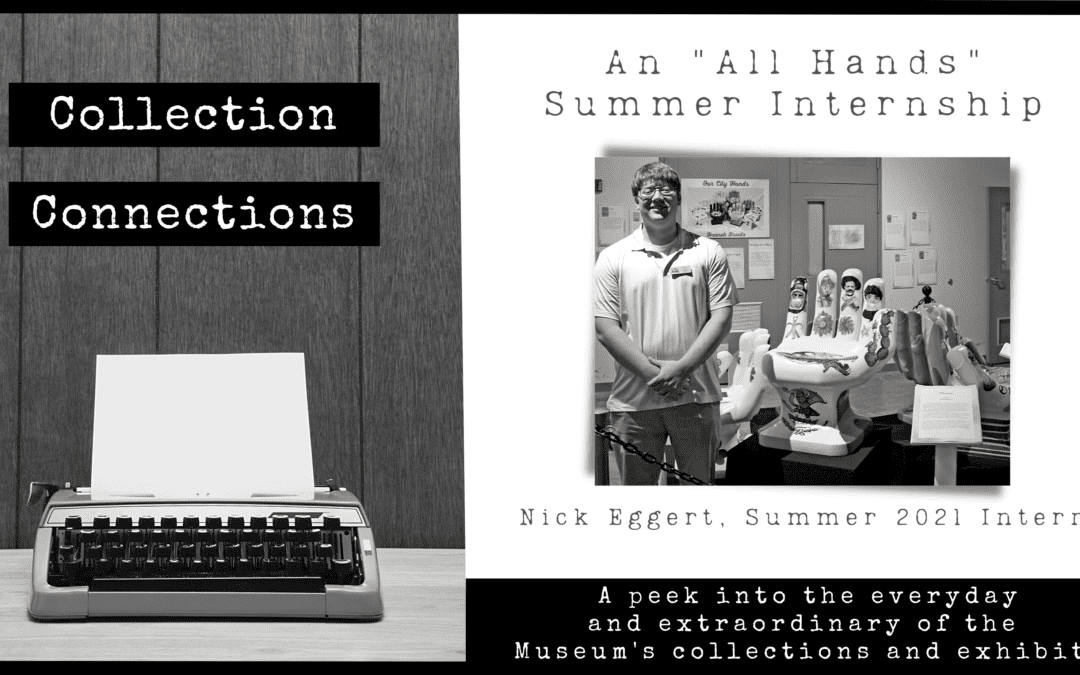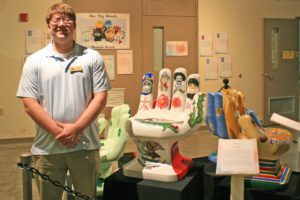Thanks to Nick Eggert, another one of our Summer 2021 Interns for sharing his experience! As an added bonus, the “Our City Hands” exhibit is back on display at the Museum for the next several months of 2022, just in case you missed it last fall!
The Many Hats You Wear:
When learning to a be a public historian, you don’t tend to think about how much hard work and labor goes into setting up an exhibit. Most people tend to think public historians and museum curators just deal with reading, researching, writing, and handling artifacts. In actuality, public historians and museum curators have to be savvy in a multitude of crafts. During my internship, I had to learn how to use cataloging and design software, how to use power tools, how to sew, how to effectively photograph objects, how to fix and set up lights, and most importantly how to move and handle objects with the utmost care. As I learned, the museum curator is a jack of all trades, especially in a smaller museum. Furthermore, when it comes to making things fit into place or using materials to create exhibits, we essentially need to have the ingenuity of MacGyver to make things work, especially when on a budget. Because there is a lot more hand-work that public historians and museum curators do than people often see when visiting a museum, I thought it was worth mentioning.

Creating a complete catalog record of objects ideally includes taking photos of all sides of an item
Working on Our City Hands:
The “Our City Hands” project was my first ever exhibit and will definitely be remembered because of how eye opening it was. There is a lot of history about Sheboygan’s diversity that I never knew until I worked on this project. Growing up here, no one taught me or went out of their way to explain the diverse history of Sheboygan. Hannah Braatz’s, the project creator, vision of ethnic celebration and acknowledgement will help teach future generations to take pride in their own culture, as well as be more informed about their multicultural city.
The hardest part of the exhibit was trying to encapsulate Hannah’s vision the best I could through the representation of the cultures on the chairs. Unfortunately, I came to learn there is only so much information you can put into a label. I had to balance the information I thought would be the most honest, intriguing, and informative for each culture, something I did not find enjoyable because it is difficult prioritizing information when everything has value. Hopefully, the exhibit we created, and the truly amazing artwork painted on the chairs, opens people’s minds to the beauty of other cultures. There is so much rich history Sheboyganites can access, and I think “Our City Hands” is a great starting point for people who want to explore other cultures.
Some Projects Are All Hands on Deck:
When Smithsonian’s traveling exhibition The Way We Worked arrived days late with little time to spare until opening, I assisted my fellow interns, David Rush and Roman Lulloff, with hanging local photos on the gallery walls. They chose photos to accompany the exhibit that highlighted local connections to the exhibit themes and it was amazing how well those photos turned out. Sheboygan County is known to be a blue collared region because of its multitude of large factories and corporations and it was nice to see our county’s progress and hardworking people on display in coordination with the Smithsonian exhibit
My Experience at SCHSM:
Working on “Our City Hands” at the Sheboygan County Historical Society and Museum has been awesome. My fellow interns and staff members have been very approachable, supportive, and enthusiastic while working with me. Their expertise and knowledge have definitely helped me develop new skills and understand what it takes to be a museum curator and collections manager. The Sheboygan County Historical Society and Museum staff’s positive atmosphere, and passion for history created a fun, but professional work environment. Their attitudes allowed me to feel welcome, and relaxed, while giving me an opportunity to further my own career. Additionally, I would like to thank the Museum’s Board of Directors, Executive Director Travis Gross, Museum Curator of Collections and Exhibits Tamara Lange, and the rest of the museum staff for creating my internship opportunity. When I first stopped by the Sheboygan County Historical Society and Museum, there were no internship positions available, however, the staff at SCHSM created a spot and opened up their doors to me, which I am extremely grateful for.




